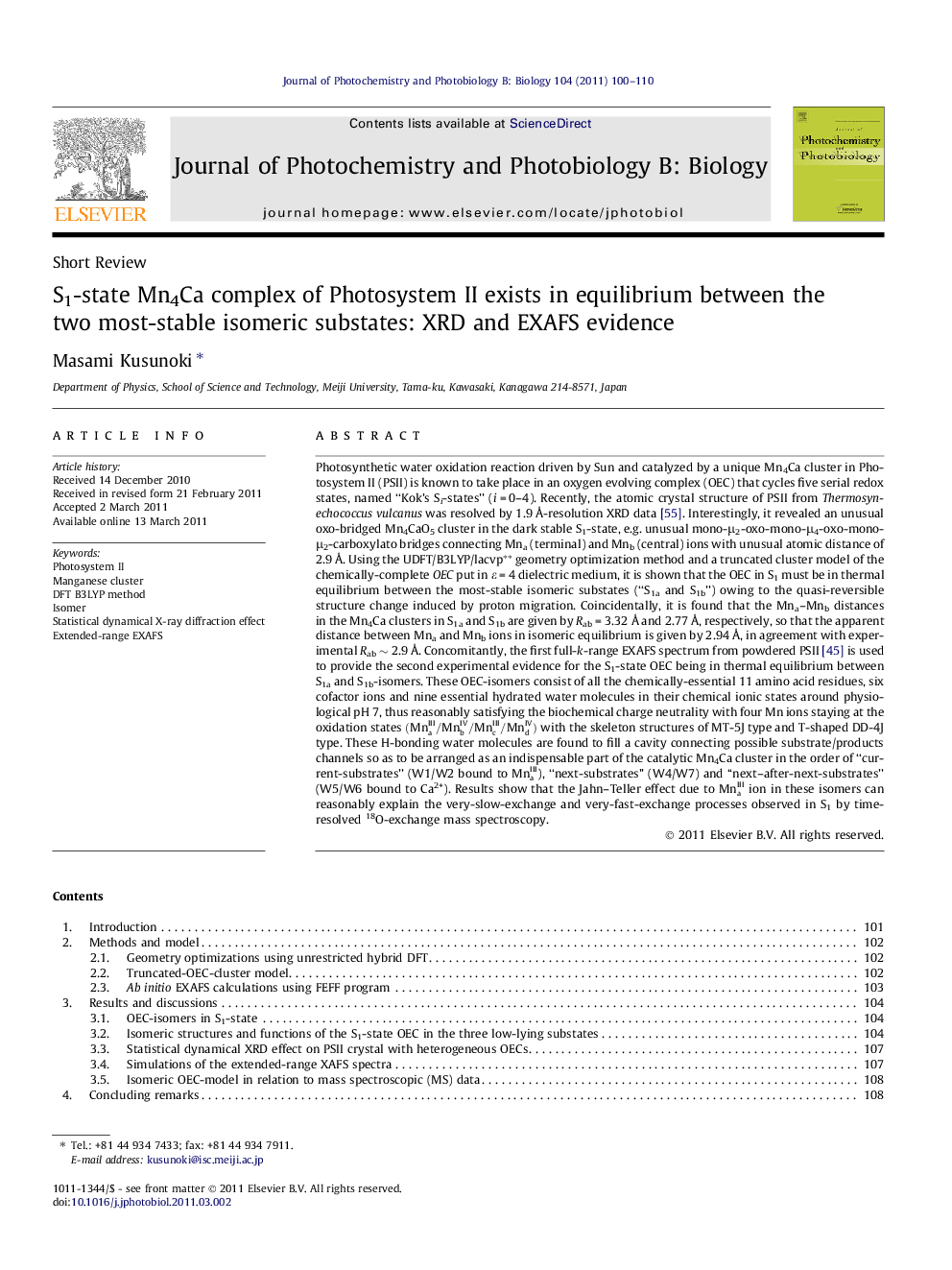| Article ID | Journal | Published Year | Pages | File Type |
|---|---|---|---|---|
| 29616 | Journal of Photochemistry and Photobiology B: Biology | 2011 | 11 Pages |
Photosynthetic water oxidation reaction driven by Sun and catalyzed by a unique Mn4Ca cluster in Photosystem II (PSII) is known to take place in an oxygen evolving complex (OEC) that cycles five serial redox states, named “Kok’s Si-states” (i = 0–4). Recently, the atomic crystal structure of PSII from Thermosynechococcus vulcanus was resolved by 1.9 Å-resolution XRD data [55]. Interestingly, it revealed an unusual oxo-bridged Mn4CaO5 cluster in the dark stable S1-state, e.g. unusual mono-μ2-oxo-mono-μ4-oxo-mono-μ2-carboxylato bridges connecting Mna (terminal) and Mnb (central) ions with unusual atomic distance of 2.9 Å. Using the UDFT/B3LYP/lacvp∗∗ geometry optimization method and a truncated cluster model of the chemically-complete OEC put in ε = 4 dielectric medium, it is shown that the OEC in S1 must be in thermal equilibrium between the most-stable isomeric substates (“S1a and S1b”) owing to the quasi-reversible structure change induced by proton migration. Coincidentally, it is found that the Mna–Mnb distances in the Mn4Ca clusters in S1a and S1b are given by Rab = 3.32 Å and 2.77 Å, respectively, so that the apparent distance between Mna and Mnb ions in isomeric equilibrium is given by 2.94 Å, in agreement with experimental Rab ∼ 2.9 Å. Concomitantly, the first full-k-range EXAFS spectrum from powdered PSII [45] is used to provide the second experimental evidence for the S1-state OEC being in thermal equilibrium between S1a and S1b-isomers. These OEC-isomers consist of all the chemically-essential 11 amino acid residues, six cofactor ions and nine essential hydrated water molecules in their chemical ionic states around physiological pH 7, thus reasonably satisfying the biochemical charge neutrality with four Mn ions staying at the oxidation states (MnaIII/MnbIV/MncIII/MndIV) with the skeleton structures of MT-5J type and T-shaped DD-4J type. These H-bonding water molecules are found to fill a cavity connecting possible substrate/products channels so as to be arranged as an indispensable part of the catalytic Mn4Ca cluster in the order of “current-substrates” (W1/W2 bound to MnaIII), “next-substrates” (W4/W7) and “next–after-next-substrates” (W5/W6 bound to Ca2+). Results show that the Jahn–Teller effect due to MnaIII ion in these isomers can reasonably explain the very-slow-exchange and very-fast-exchange processes observed in S1 by time-resolved 18O-exchange mass spectroscopy.
► Photosynthetic water oxidation reaction driven by Sun and catalyzed by a unique Mn4Ca cluster in Photosystem II takes place in an oxygen evolving complex (OEC) that cycles five serial redox “Si-states” (i = 0–4). Using the DFT geometry optimization method and a truncated OEC model in a protein dielectric medium, we show that the OEC in S1 exists in thermal equilibrium between the two most-stable isomeric sub-S-states of MT and DD types owing to the quasi-reversible structure change induced by proton migration.
